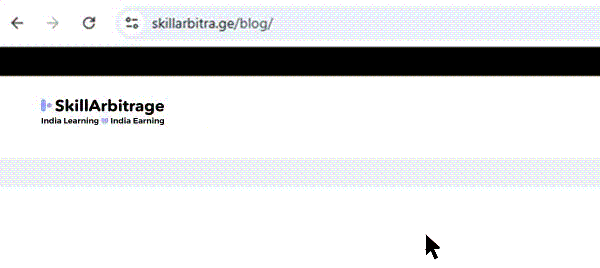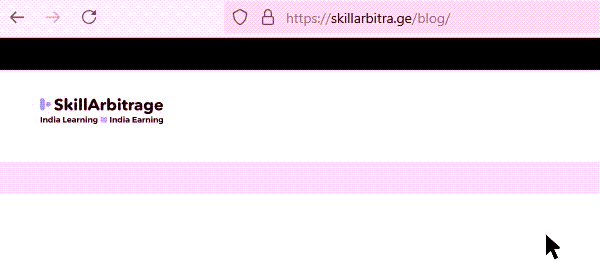There are over 100 state and 40 central labour and employment statutes applicable in different parts of the country.
As you become a senior HR manager, you cannot hope to do your work well without having a grip over these laws.
The government has proposed to replace 29 important labour laws with four labour codes, with a view to simplify the law:
- Code on Wages, 2019,
- Occupational Safety, Health & Working Conditions Code, 2020,
- Industrial Relations Code, 2020 and the
- Code on Social Security, 2020
These new labour codes have been formally enacted as laws, but they have not been notified yet, which means they are still to come in force.
Initially, there was a huge delay in framing the draft rules from state governments, but that exercise is now completed by most states.
However, due to the political sensitivities involved, these codes are not yet notified.
It is expected that they may be notified after elections, sometime this year, although this cannot be confirmed.
At the same time, organisations are preparing for this change so that they are not caught off-guard.
Can you help them prepare?
For that, you need to know what the changes are first.
A few things will change, and these changes will affect your everyday work around:
- Hiring – employees or consultants, senior executives, or contract labour,
- Payroll and various labour compliances,
- Benefits-computation and related work,
- Working with contractors and contract labour,
- Taking disciplinary action
- Responding to statutory authorities
As an HR professional/consultant/manager, it is important to prepare for the future and track developments.
Legal and compliance teams will not be spearheading this initiative, btw.
It will be the responsibility of HR managers.
And this can be your big career advantage.
Let’s begin. We will discuss 7 important points, though the full list is bigger.
Small businesses do not have to worry about standing orders
Standing orders are applicable to almost every large company. Even in the banking or IT sector, companies are following these.
As per the Industrial Relations Code, the limit for applicability of standing orders is enhanced to 300. Currently it varies from 50 to 100 in different states.
Below 300, the government does not certify standing orders. In essence, a business with less than 300 people, employer and employee are free to negotiate terms of the contract
Also, there is some flexibility in conducting disciplinary proceedings as long as natural justice is observed.
Government permission for retrenchment not needed unless there are 300 employees
Earlier, government permission was required if retrenchment was over 100 employees. Now, this is enhanced to 300 employees under the Industrial Relations Code. Procedure for retrenchment stays the same.
Modification in salary structure
Salary structures will need to be restructured, otherwise employers’ social security contributions will increase.
Usually, employers increase the quantity of allowances in an employees’ salary structure so that they can reduce the “basic” wage – on which the PF or gratuity is calculated.
Under the Labour Code, there is a provision that states that such special allowances should not exceed 50%, else they will be added back to the basic wages for the purpose of calculation of PF.
Keeping this in mind, most companies will need to revisit the drawing board and create a new salary structure to keep their social security expenses optimised.
This will impact pension, PF, gratuity and leave encashment.
We teach our students how to create a salary structure in the course. Once you do it for India, if you learn how to navigate foreign labour laws, some of which we will show you in this bootcamp itself, you can do this for employees in foreign countries as well.
Treatment of allowances for calculation of gratuity or PF is similar
There was some disparity in how allowances were treated for the purpose of calculation of gratuity and Provident Fund.
For example, certain allowances were disregarded for the calculation of Provident Fund as per a Supreme Court judgment, but they were still being taken into account for the calculation of gratuity because the parent statute for the two forms of social security was different.
Under the Code on Social Security, this has been made uniform.
Ceiling on the applicability of the Payment of Wages Act has been removed
The Payment of Wages Act is currently applicable to employees earning upto INR 24,000 per month for establishments covered under Central Government. This has increased since 2017.
State governments have a different set of thresholds.
Under the Code on Wages, there is no such wage ceiling – if no ceiling is imposed on the rules, the Act will be more widely applicable.
Fixed-term contract – fully recognized, if the person works for 1 year or more
Fixed-term contracts were earlier recognised in the apparel sector (2012) and later under model standing orders (2017) where the establishment came within the ambit of the Central Government.
They did not apply to establishments which were under the ambit of the state government.
The Labour Codes recognise fixed-term employment for all kinds of organisations, irrespective of whether they are within the purview of the Central Government or the state government.
This will entitle an employee on a fixed-term contract who works for, say, two years, to be eligible for pro-rata gratuity.
It also gives employers the flexibility to hire workforce on a need-basis.
Trade unions, industrial disputes and collective bargaining – what is going to change?
- Recognition of trade unions has been brought within the IR Code – earlier it was subject to various state laws which had different provisions thus creating disparities across States, and making it difficult for pan-India organisations to administer uniform systems.
- Minimum number of employees needed to form a trade union must be 100 – not 7 as is the case currently – this discourages unionism in small organisations and is a big boost to industry.
- All office bearers of the union should be working in the ‘specific company’. This aligns worker interest with that of the company. Earlier, there would be office bearers who played a key role in collective bargaining but they were not working in that company- so they were neither protecting worker interest nor company interest. This will reduce politicisation.
- A union recognised by the employer must have 51% or more employees on muster rolls.
- The government will specify or ‘prescribe’ which issues the unions can collectively negotiate.
Did you find this useful?
Of course, there are several other changes, but this is a good starting point.
You could start implementing some of these right away!
Make sure that you also refer to the state-level rules pursuant to these Codes.
This is just one exercise – there are many more things you can learn about labour laws and have an advantage in your day to day work as an HR professional.
You can also learn how to assist organisations with several other tasks, apart from labour and employment compliance, implement AI and use HR analytics to enable your client to get a competitive advantage.
These are not some routine admin tasks, but highly strategic work which has implications on the fortunes and trajectory of your client’s or employer’s growth.
And this could be the differentiating factor between the HR professional who becomes a CHRO or HR director vs. someone else who is still struggling to earn well.
It doesn’t matter what your current age or work experience is.
You can also build your own HR consultancy firm if you want, and charge clients 5x more than other HR firms which charge rock-bottom rates.
Are you interested in knowing more about how you can do this?
Do you want to learn how to reach out to potential clients and network with them?
Do you want exact step-by-step strategies and scripts?
Join our free, 3-day, live bootcamp this weekend.
It is online and live only. No recordings will be provided.
These insights are not provided by anyone else.







 Allow notifications
Allow notifications
